- Travel Guides
Panama Surfing Guide
Flanked by over 1,500 miles (2,400 km) of coastline, Panama is prime for surfing. Although often overshadowed by Costa Rica, Panama has an abundance of super-surfable waves. There are breaks for every type of surfer and options for both feeble-footed beginners and gnarly old pros. Whether you’re looking for something to warm-up on or something to go big on, you’ll find the right wave in Panama.
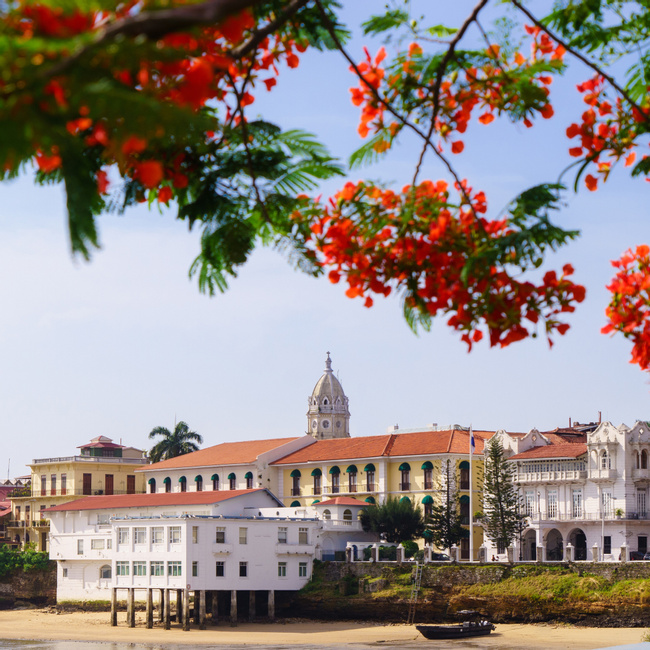
When to Go
Along Panama’s Pacific coast, April to June usually sees daylong offshore winds and consistent swells from the southwest. This is one of the most popular times to surf in Panama. The Pacific coast, however, also has sizable waves in July and August. During this time of year, the southwest swells are large and consistent—they sometimes get double or triple overhead at big breaks.
The dry season (which lasts from mid-November through mid-April) isn’t as epic in spots like Santa Catalina, but some of Panama’s islands can still pick up nice western/northwestern swells. The weather during this time of year is sunny and the winds are light. Most of the swell is small and from the northwest.
During the transition time at spring, especially in February and April, the wind can blow all day—this allows for afternoon surfing sessions. Swells from the southwest come in during this time of year and last through May or June.
Crowds will depend on the place and conditions. Crowds peak around the major holidays, including Semana Santa (the week surrounding Easter) and Christmas/New Year’s. More popular spots like Santa Catalina (considered by most to be the best surf spot along the Pacific coast) can be relatively busy year-round.
Where to Go
Panama’s most accessible surf spots are along the Pacific coast and in Bocas del Toro (on the Caribbean). There are other good spots along the Caribbean, but these tend to be difficult to reach. The locations included here are relatively accessible and reliable. They range from beginner-friendly to expert-only waves.
Santa Catalina – considered by many to be the best and most reliable surf spot along the Pacific coast of Panama, Santa Catalina has seen a surge of interest over the last decade. Prior to this it was a small fishing village and only surfed by burly locals. Nowadays, it’s visited by international surfers and even hosts large competitions.
Some breaks are suitable for beginners, while others are expert-only. Consistent waves offer good year-round surfing. The prime surfing season here is from March through October; January and February tend to have the smallest swell.
At la Punta (the Point), waves can reach 20–30 feet (6–9 m). This is a point break with strong, long waves that break both right and left. The surf is best during medium or high tide and the bottom is rocky, so wear booties. There is also a sandy beach break close by that’s suitable for beginners. The waves here break both right and left.
Punta Roca is a large point break that’s a 30-minute walk northeast of Santa Catalina. The waves can only be ridden during medium or low tide.
Punta Brava has waves that can get twice as big as Santa Catalina. It has hollow left-hand waves and a rocky bottom. It’s a 30-minute walk southeast of Santa Catalina.
Trips can also be made to Cebaco Island by boat. The island has both a beach break and a point break. It’s waves break both left and right and tend to be a similar size to Santa Catalina.
It’s possible to rent surfboards and gear from local establishments in Santa Catalina.
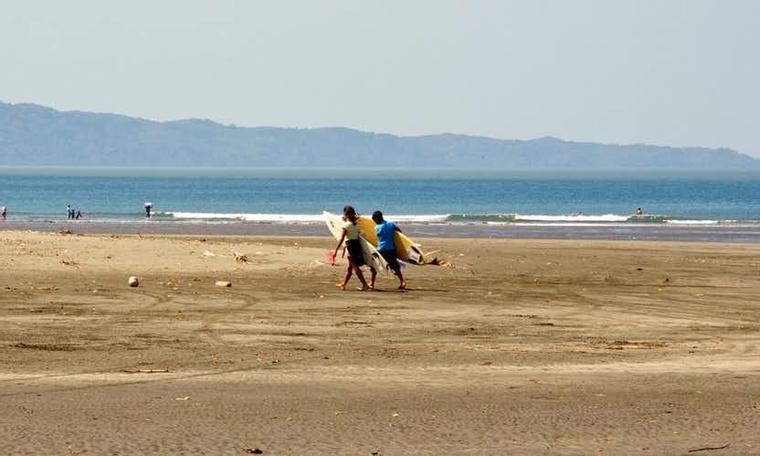
Playa Venao – set along the Azuero Peninsula's southeast coast, Playa Venao has long been a favorite of Panamanian surfers. Up until just a few years ago, there wasn’t much here besides a small restaurant and a big open beach. However, as more travelers begin to explore the southern Azuero, Playa Venao is shaping up to be one of Panama’s most notable surf spots.
The arcing, brown-sand beach offers long and easy rides. Although it can see good-sized waves, the waves tend to be good for beginner and intermediate surfers. Waves break both right and left and tend to average around 10 feet (3 m) throughout the year.
Playa Venao can be crowded on the weekend, but it tends to be pretty tranquil during the week. International tournaments hosted by the companies like Billabong sometimes descend upon Playa Venao. During these times, the beach turns into a big surf party.
There is a scattering of hotels that rent surfboards.
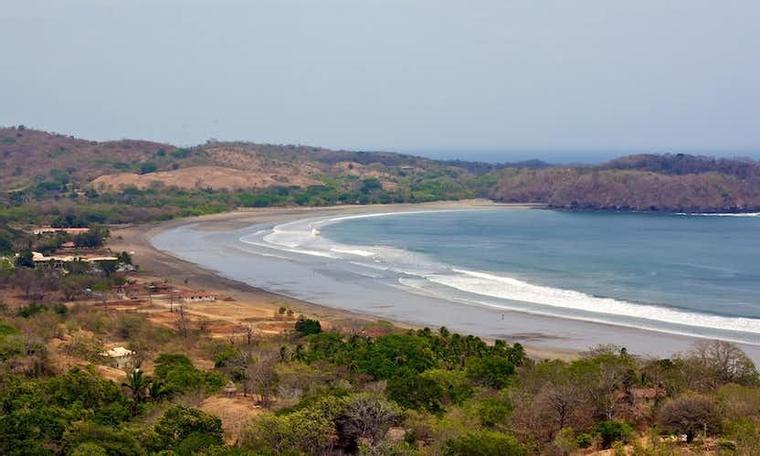
Playa Cambutal – this is another Azuero Peninsula gem that is located at the southern end of the peninsula. Adventurous surfers mainly come here now, but as word gets out about its scenic surroundings and pleasant beach vibe, Playa Cambutal seems on the verge of real development.
The long stretch of shoreline sees both beach breaks and points. It tends to catch most swells (including those from the north, south, and west), so the waves are usually a decent size—sometimes they get up to 15–20 feet (4.5–6 m). The waves have both open faces and barrels.
Other breaks in this area include 411, a long right-hand point break over a rocky bottom, and Punta Negra, an impressive point break.
Given its remote location, Playa Cambutal is rarely crowded. A few hotels rent surfboards.
Playa El Palmar – this central Pacific surf spot is a Panamanian classic that is suitable for every level of surfer. It’s not crowded, but still usually sees a consistent set of surfers (especially Panamanians). It’s located along a small beach just west of San Carlos.
The waves here can be strong and consistently get up to 8 feet (2.5 m). Playa El Palmar has three breaks (Frente Palmar, Punta Palmar, and Hawaiisito) that offer a nice sampling of waves for all types of surfers. There are both right-hand and left-hand options and the waves are best during medium to high tide. Swells come from the west, southwest, and south.
There is a surf school at Playa El Palmar that’s good for beginners. Surfboards can be rented here.
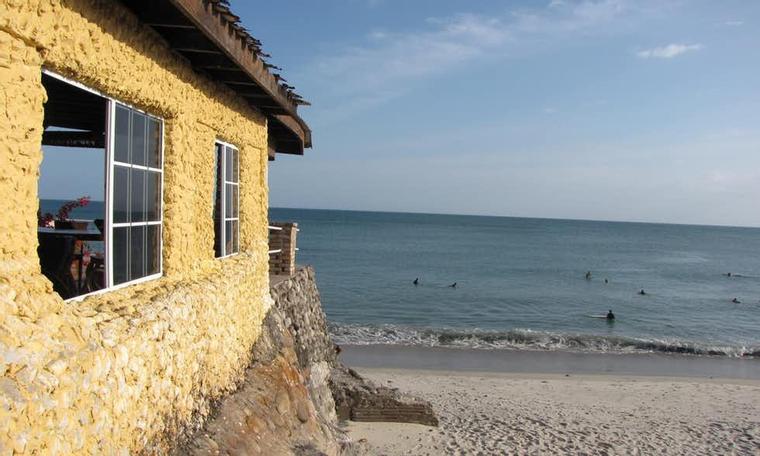
Playa Paunch – this is one of the best-known surf spots on Colón Island in the Bocas del Toro archipelago. Set along the island’s eastern coast (reasonably close to Bocas town), Paunch breaks both right and left. It has long waves that are suitable for all levels, including beginners. When the swell is big, the left side has big, powerful barrels.
Playa Paunch is located on the way to the island’s other popular surf spots, Dumpers and Playa Bluff. Since it’s the closest surfing to town (about a ten-minute drive), it can see more surfers than other spots in the archipelago.
There is a sharp reef here, so be sure to bring booties. Surfboards and other equipment can be rented in Bocas town.
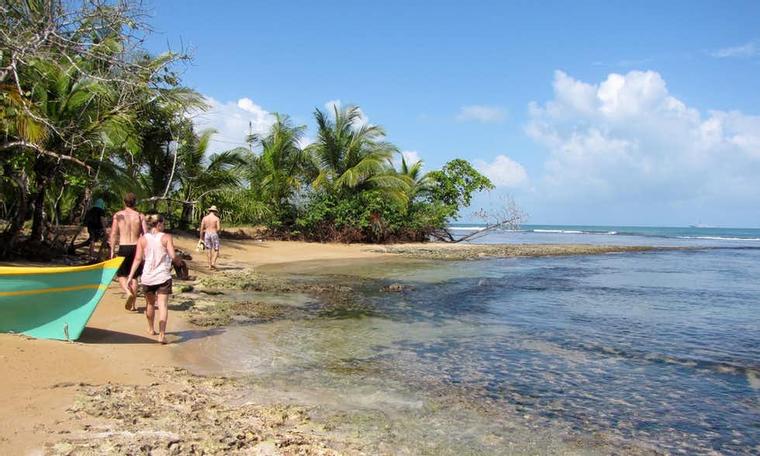
Playa Bluff – this is a long and beautiful beach at the end of Colón Island . It’s an exposed, northeast-facing beach break that sees powerful, fast-breaking waves. For this reason, it’s mainly surfed by experienced surfers.
The waves here come from deep water and then break quickly along the edge of a shallow beach—this is why the rides are short but powerful. The waves break very close to the shore and offer both lefts and rights. Many surfboards have been broken here, so be careful.
This spot is unlikely to be crowded. Surf gear can be rented in Bocas town.
Silverbacks – set off Bastimentos Island, this is one of Bocas’ most famous surf breaks. It’s also the biggest and is often compared to Hawaiian waves like Backdoor and Sunset.
The waves here emerge from deep water and encounter a sudden change in depth due to a large ledge. The waves come in fast and powerful, with huge barrels above the reef-bottom. The waves sometimes reach over 20 feet (6 meters). As such, Silverbacks is only for expert surfers. There are few beach breaks nearby at Red Frog Beach and Wizard Beach that are suitable for intermediate surfers.
Silverbacks is about a 25-minute boat ride from Bocas town. Surf gear can be rented in Bocas town.
Carenero – named for the island that it breaks near, this is another popular spot in the Bocas archipelago. It’s a left reef break that is appropriate for intermediate to advanced surfers. It breaks off the north side of Carenero Island and is super scenic, with a tree-lined island as a backdrop.
The waves here are long and barreling—they can sometimes last up to 600 feet (200 m). There is a shallow reef here, so bring booties.
Carenero is a quick five-minute boat ride from Bocas town. For this reason, it can be crowded.
Playa Malibu – Playa Malibu is one of the most reliable surf spots along Panama’s central Pacific coast. Set near the town of Gorgona, its waves break right along a sandbar at the mouth of the Chame River. The tubes can get big and the waves can be fast. It is surfable at all tides, but is not for first-timers.
Due to the river, there can be debris in the water, especially following rain. Be careful of underwater hazards.
Playa Malibu is somewhat isolated and unlikely to be crowded. It is best from March through October.
Morro Negrito – a small private island in the Gulf of Chiriquí on Panama’s Pacific coast, Morro Negrito is owned and operated by a surf camp. There are a few other private islands that surround Morro Negrito—combined these islands have around 5 reef breaks and a handful of beach breaks. The barreling reef breaks are ideal for intermediate and advanced surfers, while the beach breaks are good for beginners.
Technically, you don’t have to stay on these islands to surf the waves—the ocean is for everyone. However, it does take a boat and a bit of perseverance to get out here. The easiest way to surf these uncrowded waves is to stay here.
What to Watch Out For
The most serious hazards are reefs and rocks—these can be sharp, shallow, and dangerous. Be sure to check out reef breaks before surfing, and talk to locals about what’s underwater. Wearing booties is a must at reef breaks.
Panama’s coastlines have some alligators, especially around estuaries and islands. Again, be careful, cautious, and talk to locals if possible.
There are some sea lice that bite and there is a very slight chance of stepping on a poisonous stonefish.
Rip tides and strong currents are found in various spots across Panama. Do your research before surfing a new spot (via talking to locals or reading up on the Internet) to make sure you know what you’re getting into.
In most places, Panamanian locals are friendly and approachable. People will usually point out the best way to access the beach and even give you tips if they’re a surfer. However, please remember that you are a guest in this country. Be courteous to local surfers and help create a positive environment.
What to Bring
Panama’s popular surf spots—including those in Bocas del Toro and Santa Catalina—have a scattering of places to rent surfboards, booties, and other gear. At these places you can usually show up and rent whatever you need.
In more remote locations, you’ll need to bring all the gear. Not only does this include everything for surfing, but also safety supplies. If you’re going to be surfing in less accessible spots, have a first aid kit and an emergency plan. A cell phone and GPS device are a good idea as well.
Travel with Confidence
Ask an Anywhere expert about places to stay and things to do at your next surfing vacation. Whether you're a beginner trying out the waves, or a veteran looking for exciting challenges, we can help answer any questions or concerns.
It's more than just having a good time or visiting beautiful places (although that's absolutely a part of it!), it's about being part of a unique experience that stays with you.



